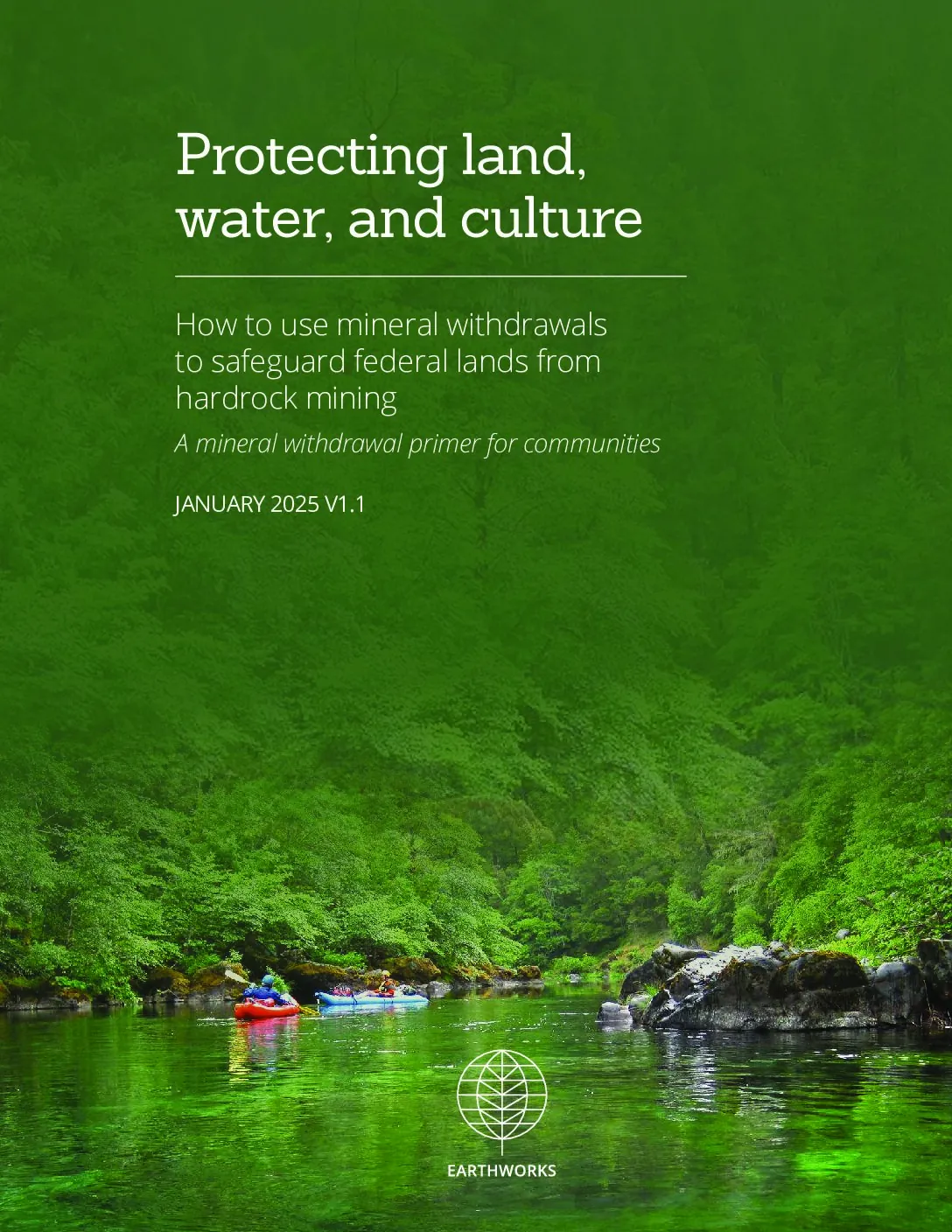This primer provides an overview of the process for establishing mining moratoriums on federal public lands, known as “mineral withdrawals.” Learn how to effectively promote and engage in the withdrawal process, and read examples of where mineral withdrawals have been successfully used to protect some of our nation’s most treasured public lands and resources.
Metal mining is the leading source of toxic pollution in the United States. Yet the 1872 Mining Law still prioritizes mining over all other land uses, jeopardizing many of the other vital land values that federal lands provide—including drinking water, cultural resources, critical fish and wildlife habitat, recreation and agriculture.
Mineral withdrawals, areas of federally owned public land that have been withdrawn from mining activities, are an essential tool to protect sensitive and valuable public resources from the harmful effects of mining. At the request of Tribes, communities, conservation organizations and others, mineral withdrawals have been established to protect national treasures (federal lands around the Grand Canyon and Yellowstone National Park), cultural resources, clean water, and wildlife habitat.

